Wisdom teeth, also known as the third molars, are the last set of teeth at the back of the mouth, typically erupting in late adolescence or early adulthood, usually between the ages of 17 and 25. However, with the evolution of humans and changes in diet, the growth of wisdom teeth has become less common in many people. For some, these teeth may not fully emerge or may be impacted, which can lead to various oral health problems such as tooth crowding, cavities, gum disease, and severe pain. As a result, wisdom tooth extraction is often a necessary procedure.
This article will provide a detailed overview of wisdom tooth extraction, including the definition and growth process of wisdom teeth, indications for removal, the steps of the extraction procedure, aftercare, and possible complications. By reading this article, you will gain a comprehensive understanding of this common dental treatment and be better prepared for the process.
1. What Are Wisdom Teeth?
Wisdom teeth, or third molars, are the last set of permanent teeth located at the back of the upper and lower jaws. They are usually the last teeth to emerge and can cause problems due to lack of space in the mouth. Wisdom teeth typically appear between the ages of 17 and 25, but some individuals may not develop wisdom teeth at all, or they may develop them later in life.
Historically, wisdom teeth served a functional purpose in early human diets, which involved chewing raw plant materials and meat. However, with the advent of modern diets and smaller jaw sizes, many people’s jaws no longer have sufficient space for wisdom teeth to grow properly, leading to impaction and other dental issues.
In some cases, wisdom teeth may grow in correctly and cause no problems. However, they often become impacted (unable to fully emerge) or misaligned, causing a range of oral health issues. As a result, many people undergo wisdom tooth extraction to prevent complications.
2. Growth and Development of Wisdom Teeth
2.1 Timing of Wisdom Tooth Eruption
Wisdom teeth usually begin to emerge between the ages of 17 and 25, but this varies from person to person. Some people may experience the eruption earlier or later, and some individuals may never develop wisdom teeth.
The eruption process can be quite slow and often involves some discomfort. However, many people do not experience significant issues with their wisdom teeth unless they are impacted or grow in at an angle.
2.2 Stages of Wisdom Tooth Development
The development of wisdom teeth typically follows these stages:
- Bud Stage: Wisdom teeth begin forming in the jawbone before the age of 18. At this stage, they are not visible but are starting to form beneath the gumline.
- Eruption Stage: As wisdom teeth begin to emerge, they cut through the gums, often causing discomfort.
- Fully Erupted Stage: In some cases, wisdom teeth fully erupt, aligning with the rest of the teeth and functioning like any other molars. However, this is rare, as most people experience some form of impaction or misalignment.
When wisdom teeth are impacted (unable to fully erupt), they can cause problems such as infection, cyst formation, or damage to adjacent teeth.
3. Indications for Wisdom Tooth Extraction
Not every person needs to have their wisdom teeth removed. However, extraction becomes necessary under certain conditions, which include the following:
3.1 Impacted Wisdom Teeth
If a wisdom tooth is unable to emerge fully from the gumline due to a lack of space or other obstructions, it becomes impacted. Impacted wisdom teeth can cause pain, swelling, and discomfort. In some cases, they may push against adjacent teeth, causing tooth crowding or damaging neighboring teeth.
3.2 Pericoronitis (Gum Infection)
When a wisdom tooth partially erupts, a flap of gum tissue can cover part of the tooth, trapping food and bacteria. This can lead to an infection known as pericoronitis, which is characterized by swelling, pain, and difficulty in fully opening the mouth. If the infection is persistent, the affected tooth may need to be removed.
3.3 Cavities and Periodontal Disease
Because wisdom teeth are located at the back of the mouth, they are difficult to clean properly. As a result, they may be more susceptible to cavities, gum disease, and other dental issues. If a wisdom tooth becomes decayed or if it causes gum disease, removal may be necessary to prevent further complications.
3.4 Pain and Discomfort
Impacted wisdom teeth can cause significant pain, especially when they press against neighboring teeth or irritate the gums. This can lead to headaches, jaw pain, and discomfort in the mouth, making it difficult to eat, speak, or maintain good oral hygiene.
3.5 Damage to Adjacent Teeth
In some cases, wisdom teeth may push against neighboring teeth, causing misalignment or damaging the roots of adjacent teeth. This can lead to tooth decay, misalignment, and other complications. Extraction may be necessary to prevent further damage.
3.6 Preventive Extraction
In some cases, dentists may recommend removing wisdom teeth as a preventive measure, especially if they are likely to cause problems in the future. For example, if a patient is undergoing orthodontic treatment, removal of wisdom teeth may prevent them from causing crowding or interfering with the alignment of other teeth.
4. The Wisdom Tooth Extraction Procedure
Wisdom tooth extraction is a common surgical procedure, usually performed by an oral surgeon or a general dentist. The complexity of the procedure depends on factors such as the position and angle of the wisdom teeth, as well as the patient’s overall oral health.
4.1 Pre-Extraction Consultation and Diagnosis
Before deciding to extract wisdom teeth, a dentist or oral surgeon will conduct a thorough examination, including X-rays, to assess the position and condition of the teeth. X-rays help the dentist determine whether the teeth are impacted and how they are positioned relative to surrounding structures.
4.2 Anesthesia
To ensure the patient remains comfortable during the procedure, local anesthesia is used to numb the area around the wisdom teeth. In some cases, if the extraction is complex, sedation or general anesthesia may be required, particularly if multiple teeth need to be removed or if the patient experiences anxiety.
4.3 The Extraction Procedure
The basic steps of the wisdom tooth extraction procedure are as follows:
- Incision: If the tooth is impacted or buried under the gum tissue, the dentist may need to make an incision to expose the tooth.
- Tooth Removal: In some cases, the dentist may need to break the wisdom tooth into smaller pieces for easier removal.
- Stitches: After the tooth is removed, the incision site may be sutured with absorbable stitches. These stitches dissolve on their own and typically do not require removal.
- Cleaning and Disinfection: The extraction site is cleaned, and any remaining debris is removed to prevent infection.
The extraction procedure typically takes between 30 minutes to an hour, depending on the complexity of the case.
4.4 Post-Extraction Recovery
After the wisdom teeth are extracted, patients need time to recover. The length of recovery depends on the complexity of the extraction, the number of teeth removed, and the individual patient’s healing process.

5. Aftercare Following Wisdom Tooth Extraction
Proper aftercare is essential to minimize the risk of complications, promote healing, and ensure a smooth recovery after wisdom tooth extraction.
5.1 Controlling Bleeding
After the extraction, it is normal for the extraction site to bleed slightly. Patients are typically advised to bite down on gauze pads for 30-45 minutes to help control bleeding. If bleeding persists beyond 24 hours, patients should contact their dentist.
5.2 Pain Management and Swelling
Pain and swelling are common after wisdom tooth extraction. To alleviate these symptoms, patients are usually prescribed pain relievers and instructed to use ice packs on the affected area for the first 24-48 hours. Swelling typically peaks 2-3 days after surgery and begins to subside within a week.
5.3 Oral Hygiene
For the first 24 hours after surgery, patients should avoid brushing or rinsing their mouths to prevent disrupting the blood clot that forms at the extraction site. After 24 hours, patients can begin gently rinsing their mouth with warm saltwater to keep the area clean. Brushing and flossing should resume with caution, avoiding the extraction site.
5.4 Diet and Nutrition
For the first few days after surgery, patients should stick to soft, easy-to-eat foods, such as mashed potatoes, yogurt, soups, and smoothies. Avoid hard, crunchy, spicy, or hot foods that may irritate the healing area. Drinking plenty of fluids is important to stay hydrated, but patients should avoid using straws, as sucking can dislodge the blood clot and lead to a painful condition called dry socket.
5.5 Rest and Activity Limitations
Patients should rest and avoid strenuous activities for the first 48 hours after the procedure. Physical exertion can increase swelling and prolong recovery time. It’s also important to keep the head elevated, even when sleeping, to reduce swelling.
6. Common Complications of Wisdom Tooth Extraction
While wisdom tooth extraction is generally a safe and routine procedure, complications can arise. Being aware of potential issues allows patients to seek prompt care if necessary.
6.1 Dry Socket
Dry socket is one of the most common complications of wisdom tooth extraction. It occurs when the blood clot at the extraction site becomes dislodged or fails to form, exposing the bone and nerves. This condition is very painful and can delay healing. Symptoms of dry socket include severe pain several days after the extraction, a foul odor, and
a visible empty socket. Treatment typically involves cleaning the area and applying a medicated dressing to promote healing.
6.2 Infection
Infection is a potential complication following any surgery, including wisdom tooth extraction. Symptoms of infection include increased pain, redness, swelling, pus discharge, or fever. Prompt treatment with antibiotics is required if an infection is suspected.
6.3 Nerve Damage
In rare cases, wisdom tooth extraction may result in nerve damage, particularly in the lower jaw. This can cause temporary or permanent numbness or tingling in the lower lip, chin, or tongue. While this is a rare occurrence, it may require additional treatment or follow-up care.
6.4 Fracture of the Jawbone
In some cases, the removal of wisdom teeth, especially when they are deeply impacted, can result in fractures of the jawbone. This complication may require further surgery or extended healing time.
7. Conclusion
Wisdom tooth extraction is a common dental procedure that helps resolve issues caused by impacted or problematic wisdom teeth. Although the procedure itself is relatively straightforward, proper aftercare is crucial to avoid complications and promote a smooth recovery. Understanding the indications for extraction, the steps involved in the procedure, and the potential complications will help patients better prepare for the process and ensure optimal oral health in the long term.
By following the advice of your dentist and maintaining good oral hygiene, you can minimize the risks and complications associated with wisdom tooth extraction, allowing you to enjoy a healthier and pain-free smile.

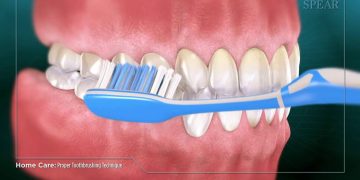
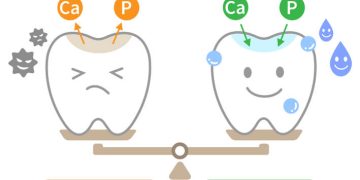
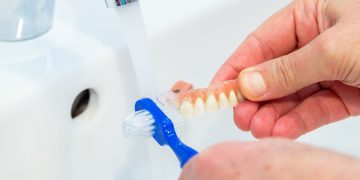




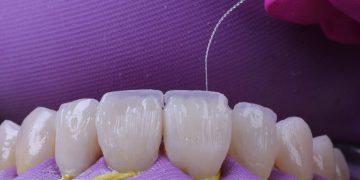
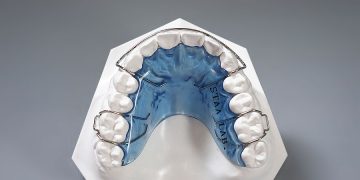

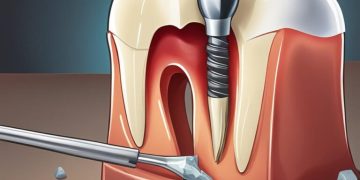
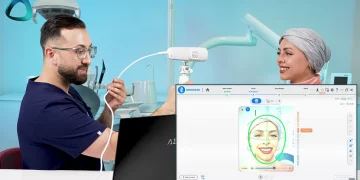


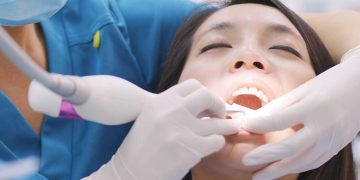

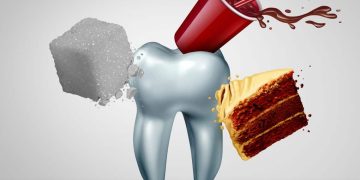







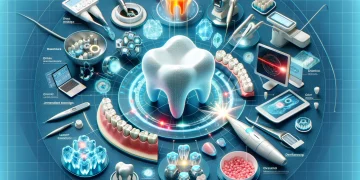



















Discussion about this post